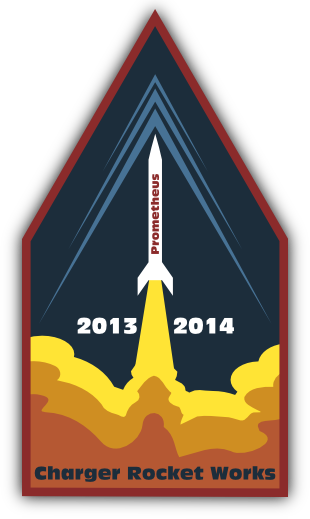Supersonic Coatings
The importance of finding durable paints and coatings for supersonic flight is multifold. Weight is often a major factor in space flight and minimizing weight by finding lighter coatings that can withstand the rigors of supersonic flight is important. Cost is another driving factor and should be minimized. By testing different paints with subscale rockets that still travel supersonic, reliable and accurate data can be gathered on a variety of paints and coatings cheaply. The importance of testing the reliability of the thermo changing tape lies in the cost. Typically to gain accurate temperature data at various location on the craft would require sophisticated temperature sensors and data acquisition. If the tape can be found to withstand the stresses of supersonic flight a cheap alternative will have been found.
Micro Gravity Propellent Control
CRW will build on the work done for the UAH SLP rocket from 2012-2013 to study the use of
dielectrophoretic forces to manage propellant storage in microgravity. This experiment is based on
work conducted by James B. Blackmon as published in “Collection of Liquid Propellants in Zero Gravity
with Electric Fields” in the Journal of Spacecraft and Rockets, Vol. 2, Number 3, Pages 391-398, May-June 1965.
For this rocket, a redesigned payload will be developed to more thoroughly study the ability
to control the position of liquid propellant using electric fields. Using the results gathered from last
year’s flight test, the experimental approach will be improved through the use of stronger electric fields
and an improved imaging system. The payload will consist two tanks containing a fluid with a dielectric
constant similar to typical propellants.
Landing Zone Hazard Detection
The LHDS will be a self-contained system with independent power and data transmission capabilities. It will deploy with the drogue parachute approximately at apogee and scan the area beneath the vehicle for potential landing hazards. The system will use a Beaglebone white with a camera cape to scan the ground during decent. The system will be a pendulum hanging from the end of a tether below the rocket. A fast shutter speed is required to take images of the ground moving rapidly through the field of view of the camera. A custom software consisting of edge detection, color detection and shadow analysis will be coded using C++ and OpenCV in C++ as the primary language. The three detection methods were chosen because they each can help detect a different kind of hazard and depending on the conditions edge detection will be difficult if pictures are too blurry. With all three methods, there is redundancy so that as long as one works, hazards can be detected.
Nanolaunch 1200 Coefficients
Prometheus itself is a payload. The rocket is a scaled version of the Nanolaunch 1200 and is part of an experiment to find several key Coefficients related to the Nanolaunch 1200. This will be done by an advanced avionics package that will measure acceleration, rotation, and pressures.
Click View More to go to the rocket page to read more about the rocket design.
